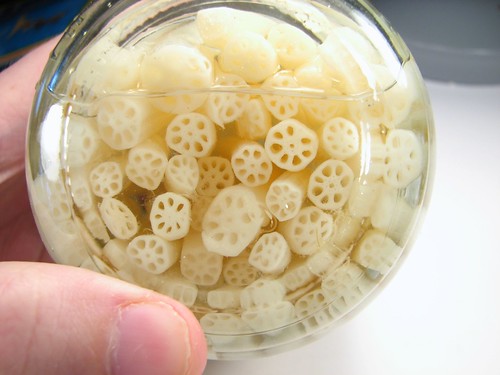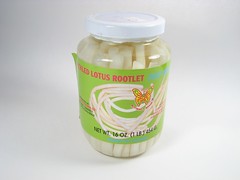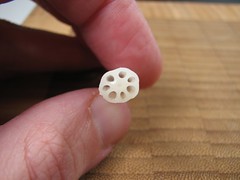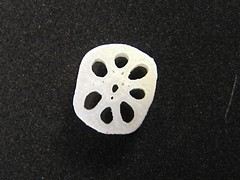
Nelumbo Nucifera, also known as the Sacred Lotus (amongst other names) is a magnificent oddity of a plant. It roots in the mud of shallow lakes and ponds, growing leaves that float on the surface as lily pads lily pads or rise up above the water on hard stalks. The lotus flower itself is the model of a classic and gracefulwater lily flower, where both the flower and resulting seed pod have a characteristic pattern of holes.




The hole patterns continue throughout the plant, showing up in in the stalks and underground stems (rhizomes) of the lotus plant. The rhizomes, usually just referred to as “lotus root” are prepared as vegetable in many types of asian cuisine. Typically you’ll find them served as thin slices through the root (a couple of inches in diameter), showing the distinctive pattern and prepared in many different ways– I’m partial to tempura. (If you haven’t had them, the taste is a bit like a more substantial and nutty version of a water chestnut.)
Another way that you can sometimes find lotus root prepared is as pickled lotus rootlets, which are immature and more tender lotus roots in brine (pictured here). You might find these in a salad or Vietnamese sandwich— they are tasty like their bigger friends.
Appearances aside, the first bizarre thing about the Sacred Lotus is that it’s one of only a handful of known plants that displays “warm-blooded” behaviour: It actively regulates the temperature of its flower to be at a near-constant temperature, even as the ambient temperature varies by a much larger amount. (
The second thing, which I haven’t seen written about anywhere, has led me to ask: how can a lotus root be like a spider?
Continue reading Another oddity of lotus roots →













